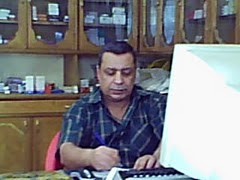Bitter Melon (Momordica charantia):
Bitter melon, also known as balsam pear, is a tropical vegetable widely cultivated in Asia, Africa and South America, and has been used extensively in folk medicine as a remedy for diabetes. The blood sugar lowering action of the fresh juice or extract of the unripe fruit has been clearly established in both experimental lab and clinical studies.
Bitter melon is composed of several compounds with confirmed anti-diabetic properties. Charantin, extracted by alcohol, is a hypoglycaemic agent composed of mixed steroids that is more potent than the drug tolbutamide which is often used in the treatment of diabetes. Momordica also contains an insulin-like polypeptide, polypeptide-P, which lowers blood sugar levels when injected subcutaneously into type 1 diabetic patients. The oral administration of 50-60 ml of the juice has shown good results in clinical trials.
Excessively high doses of bitter melon juice can cause abdominal pain and diarrhea. Small children or anyone with hypoglycemiashould not take bitter melon, since this herb could theoretically trigger or worsen low blood sugar, or hypoglycemia. Furthermore, diabetics taking hypoglycemic drugs (such as chlorpropamide,glyburide, or phenformin) or insulin should use bitter melon withcaution, as it may potentiate the effectiveness of the drugs, leading to severe hypoglycemia.
Onion and Garlic:
( Allium cepa and Allium sativum) Onion and garlic have significant blood sugar lowering action. The principal active ingredients are believed to be allyl propyl disulphide (APDS) and diallyl disulphide oxide (allicin), although other constitutents such as flavonoids may play a role as well.
Experimental and clinical evidence suggests that APDS lowers glucose levels by competing with insulin for insulin-inactivating sites in the liver. This results in an increase of free insulin.APDS administered in doses of 125 mg/ kg to fasting humans was found to cause a marked fall in blood glucose levels and an increase in serum insulin. Allicin doses of 100 mg/kg produced a similar effect.
Onion extract was found to reduce blood sugar levels during oral and intravenous glucose tolerance. The effect improved as the dosage was increased; however, beneficial effects were observed even for low levels that used in the diet (eg., 25 to 200 grams). The effects were similar in both raw and boiled onion extracts. Onions affect the hepatic metabolism of glucose and/or increases the release of insulin, and/or prevent insulin's destruction.
The additional benefit of the use of garlic and onions are their beneficial cardiovascular effects. They are found to lower lipid levels, inhibit platelet aggregation and are antihypertensive.
So, liberal use of onion and garlic are recommended for diabetic patients.
You can get odorles Standerdized Garlic here
Blueberry leaves (Vaccinium myrtillus):
A decoction of the leaves of the blueberry has a long history of folk use in the treatment of diabetes. The compound myrtillin (an anthocyanoside) is apparently the most active ingredient. Upon injection it is somewhat weaker than insulin, but is less toxic, even at 50 times the 1 g per day therapeutic dose. A single dose can produce beneficial effects lasting several weeks.
Blueberry anthocyanosides also increase capillary integrity, inhibit free-radical damage and improve the tone of the vascular system. In Europe, it is used as an anti-haemorrhagic agent in the treatment of eye diseases including diabetic retinopathy.
Asian Ginseng:
Asian ginseng is commonly used in traditional Chinese medicine to treat diabetes. It has been shown to enhance the release of insulin from the pancreas and to increase the number of insulin receptors. It also has a direct blood sugar-lowering effect. A recent study found that 200 mg of ginseng extract per day improved blood sugar control as well as energy levels in Type 2 diabetes (NIDDM).Ginseng Varieties
BilberryBilberry:
It may lower the risk of some diabetic complications, such as diabetic cataracts and retinopathy.Billberry
SteviaStevia:
has been used traditionally to treat diabetes. Early reports suggested that stevia might have beneficial effects on glucose tolerance (and therefore potentially help with diabetes), although not all reports have confirmed this. Even if stevia did not have direct antidiabetic effects, its use as a sweetener could reduce intake of sugars in such patients.Get Stevia
Ginkgo Biloba:
Ginkgo biloba extract may prove useful for prevention and treatment of early-stage diabetic neuropathy.
Cinnamon :
It triples insulin's efficiency..Standerdized Cinnamon
Barberry :
One of the mildest and best liver tonics known.
Dosage: tincture, 10-30 drops; standard decoction or 3-9 g.
Nigella Sativa Oil( NSO):
NSO significantly lowered blood glucose concentrations in diabetic rats after 2, 4 and 6 weeks. The blood lowering effect of NSO was, however, not paralled by a stimulation of insulin release in the presence of NSO,or its active ingredients, nigellone or thymoquinone. The data indicate that the hypoglycemic effect of NSO may be mediated by extrapancreatic actions rather than by stimulated insulin release.
Almost all can be easily obtained, or they are already in your kitchen.
Living with Type II Diabetes?


2 comments:
Post a Comment